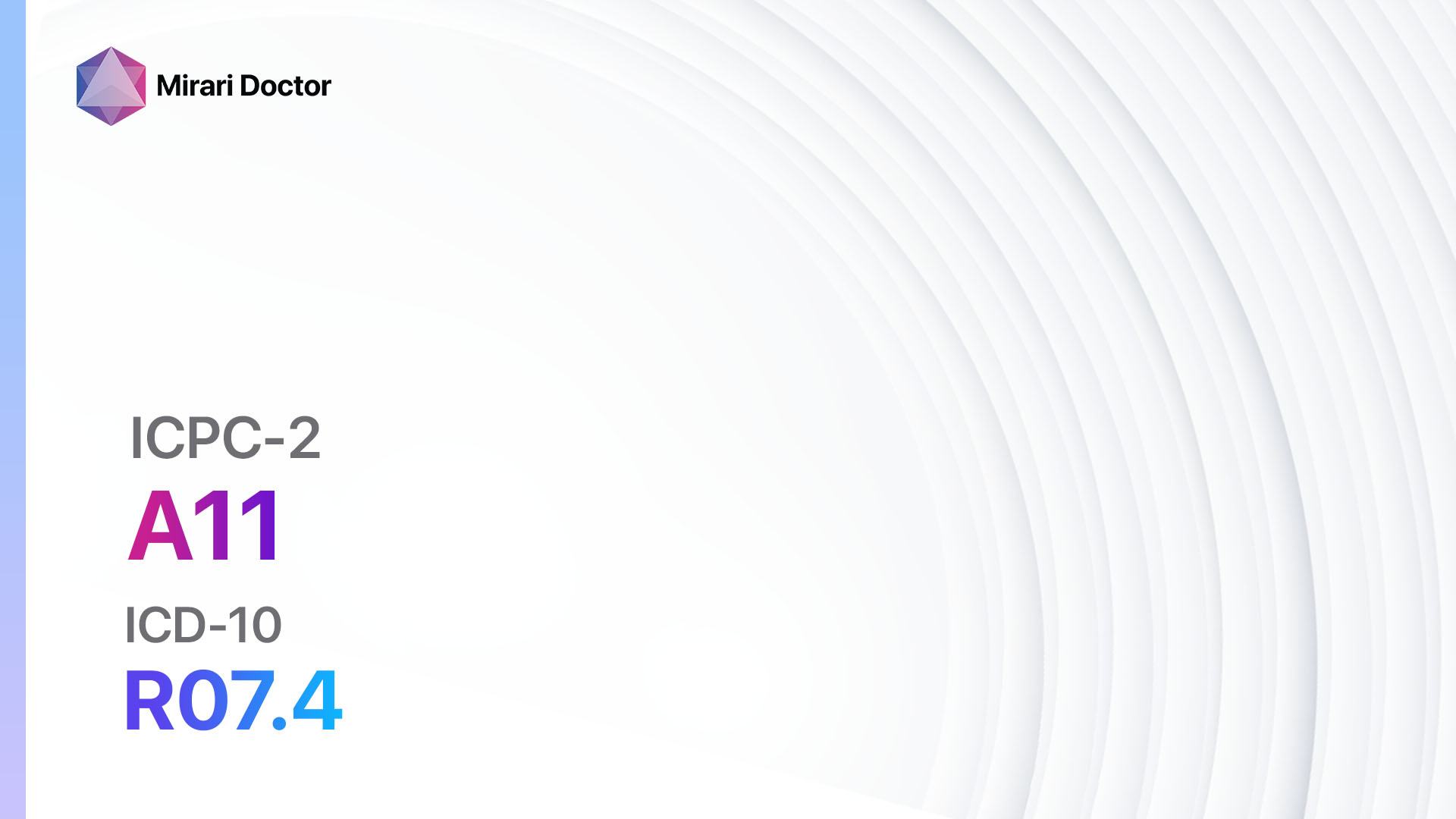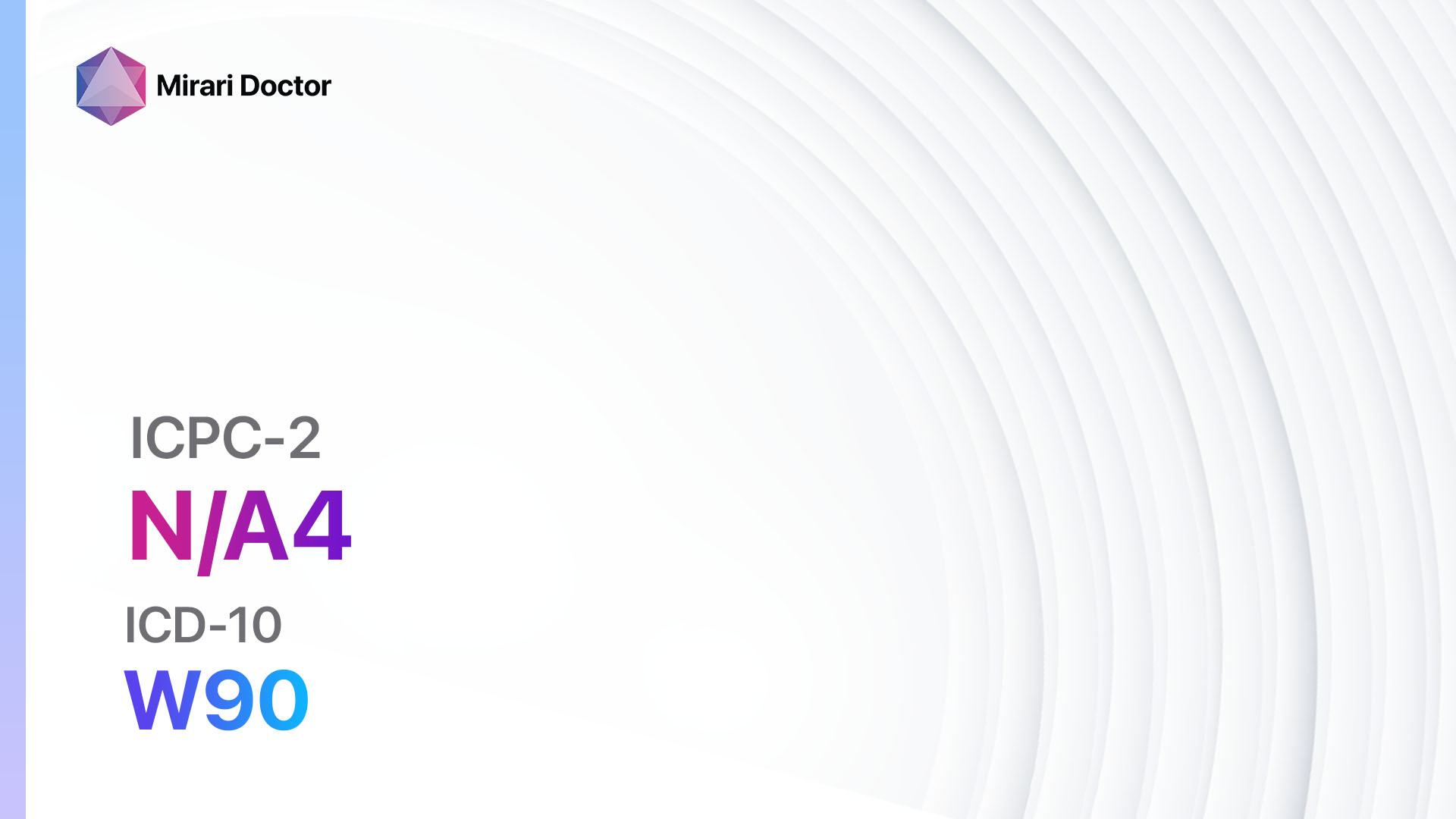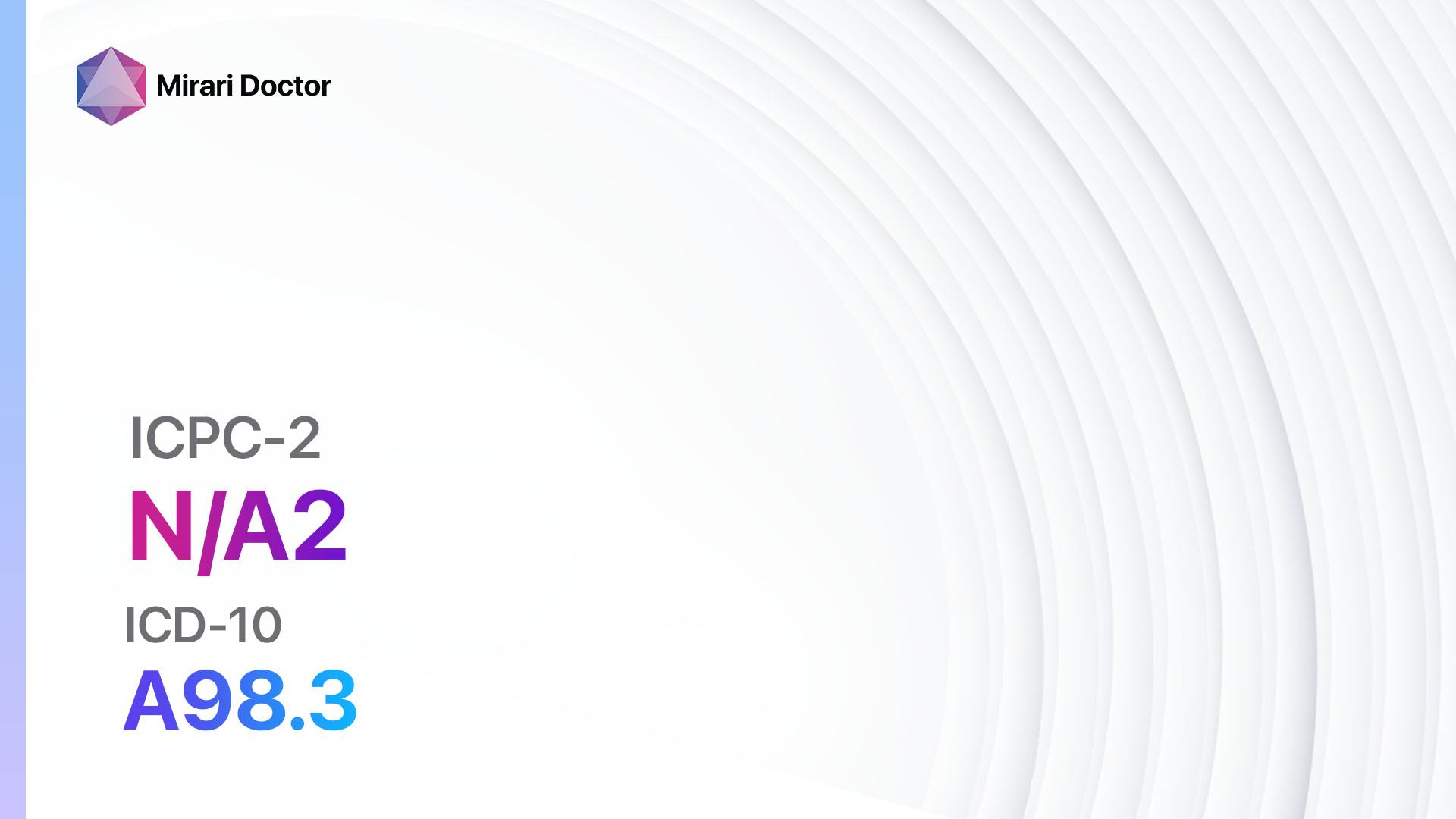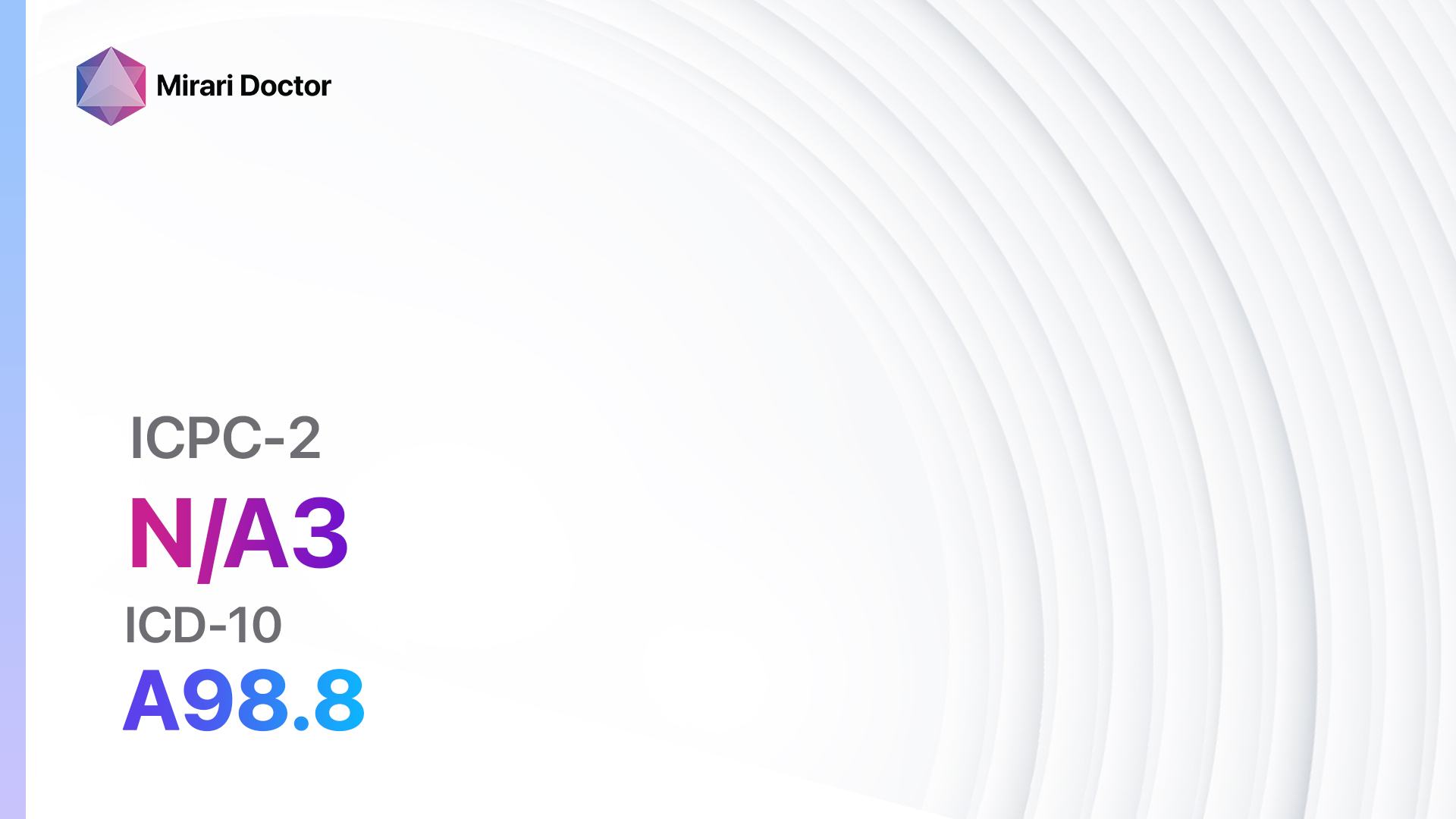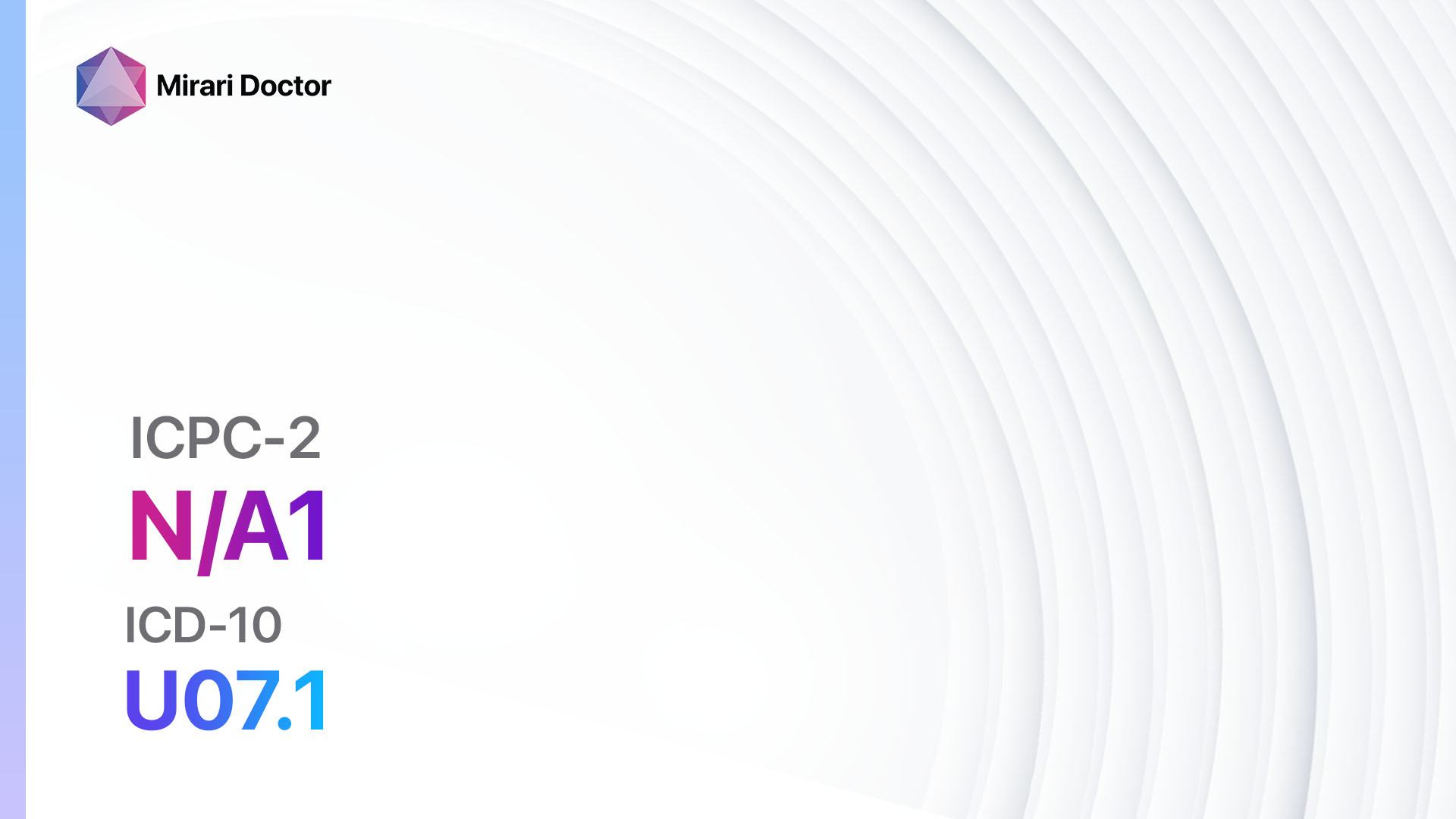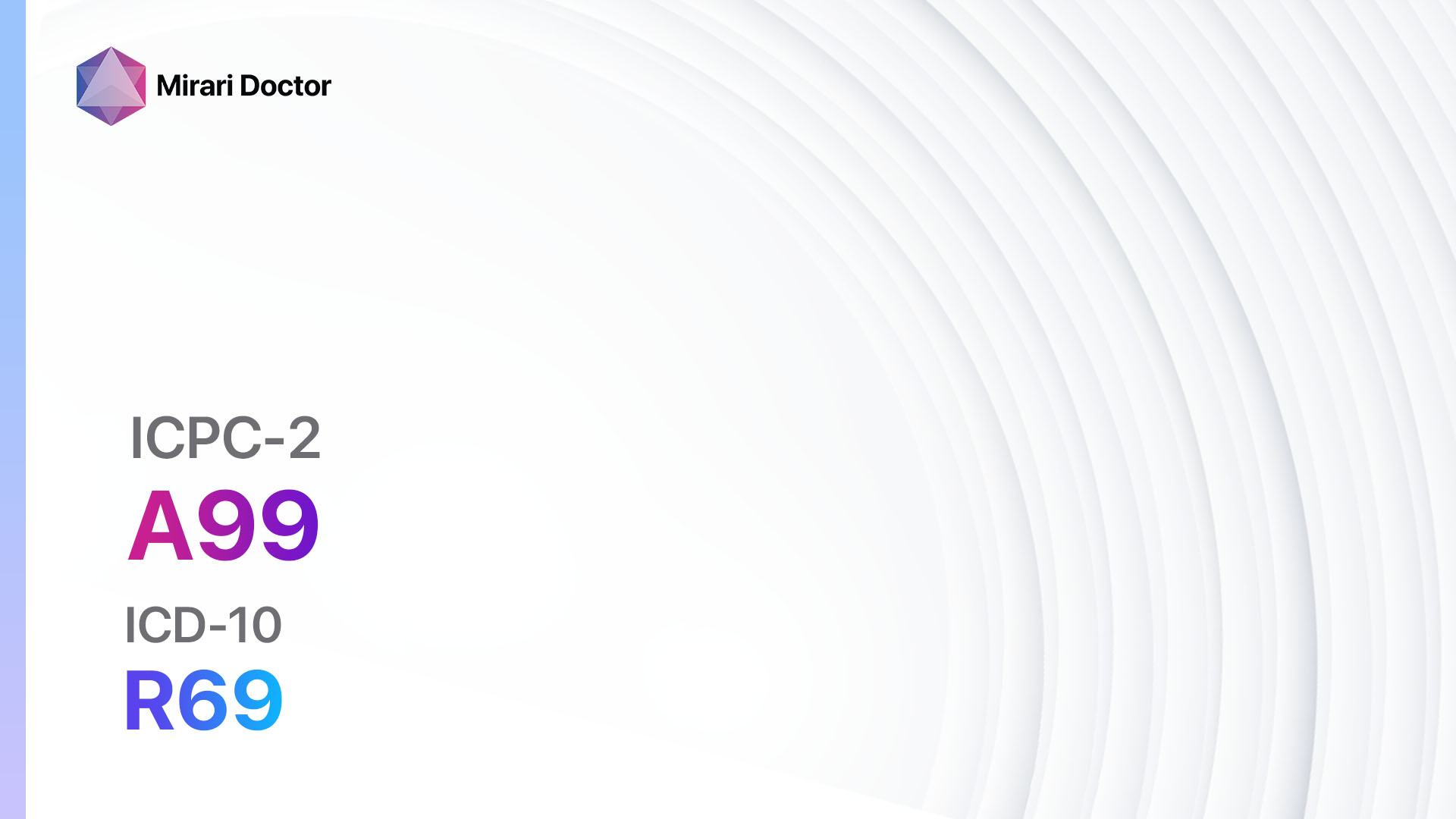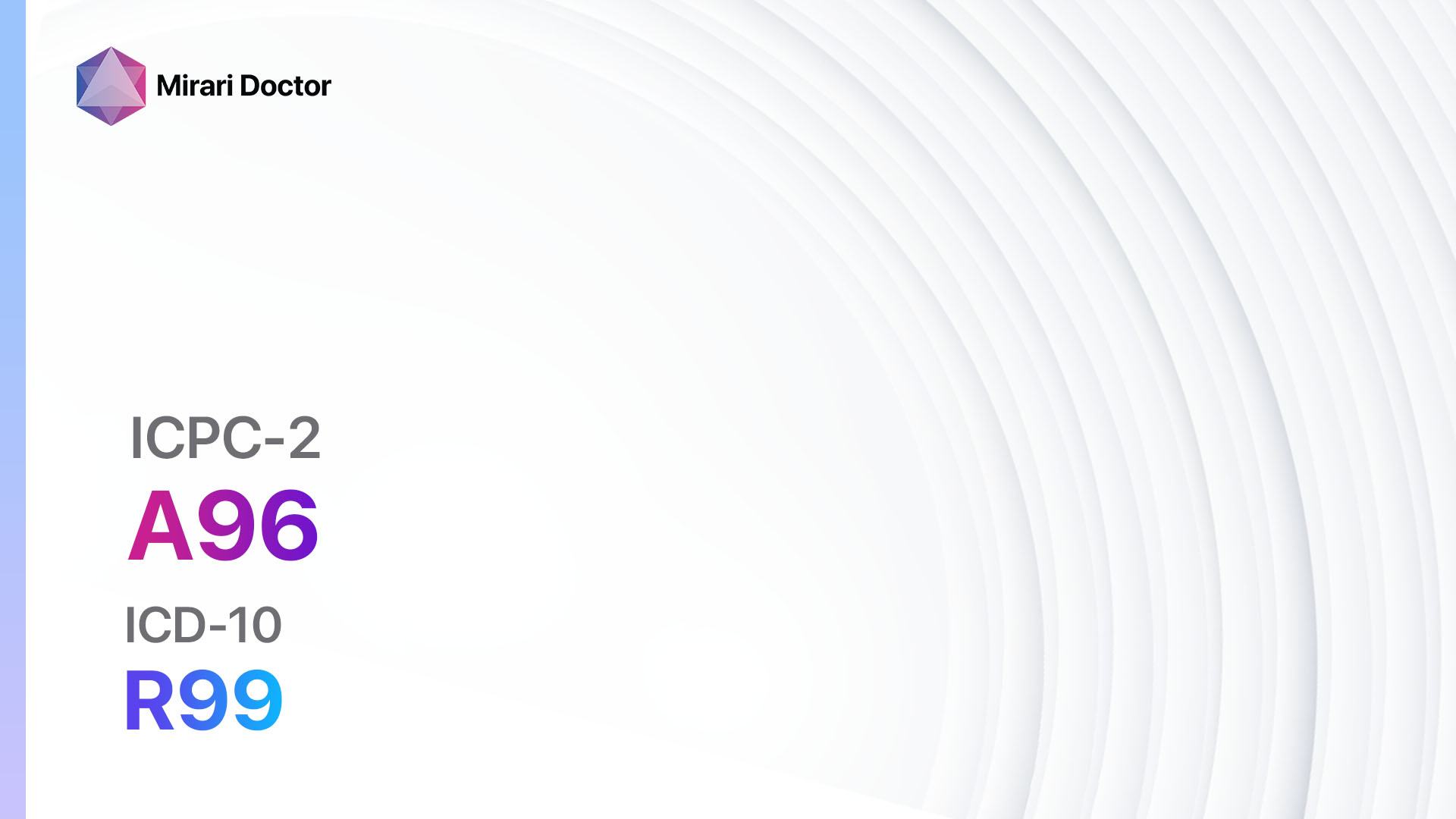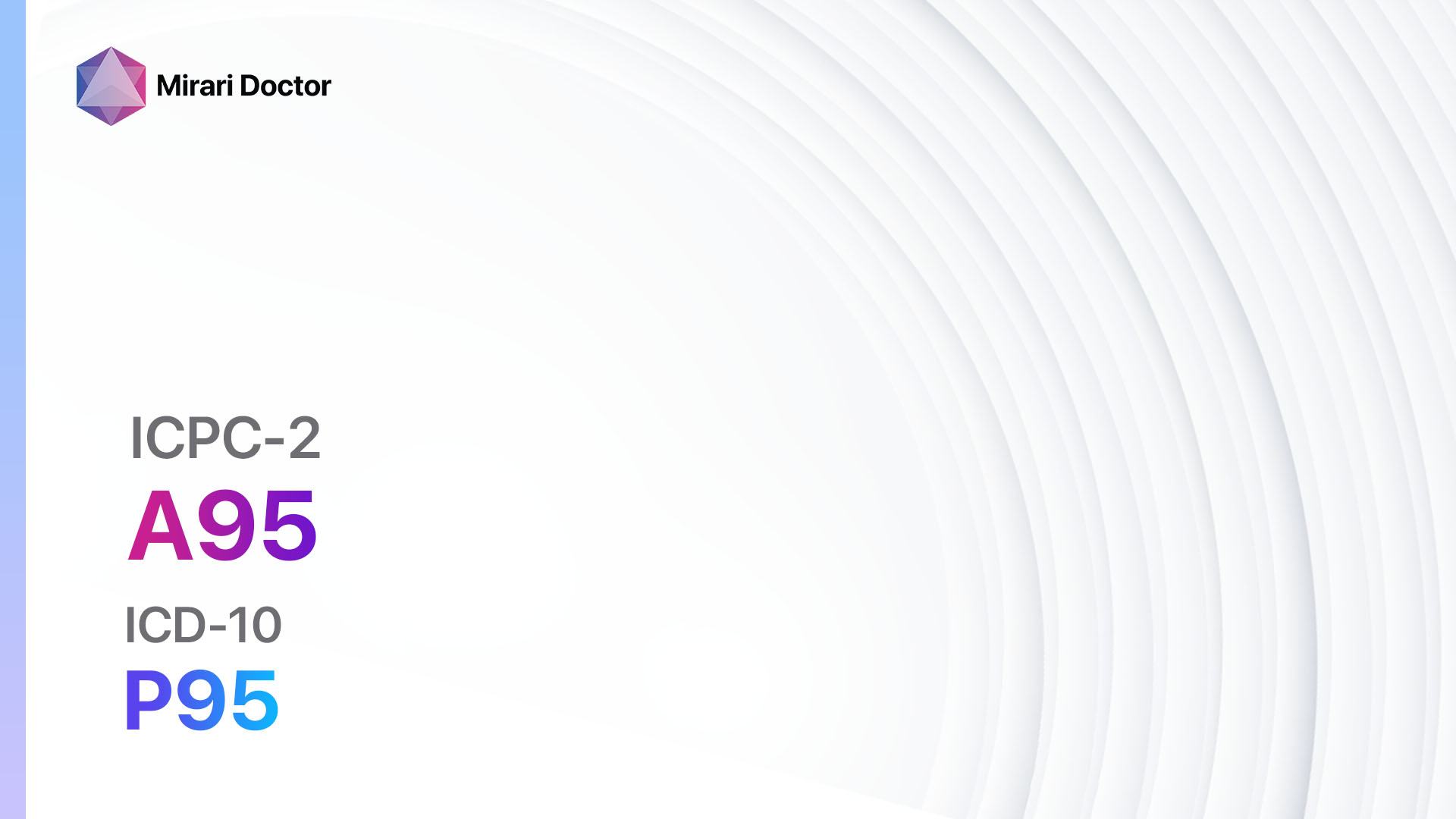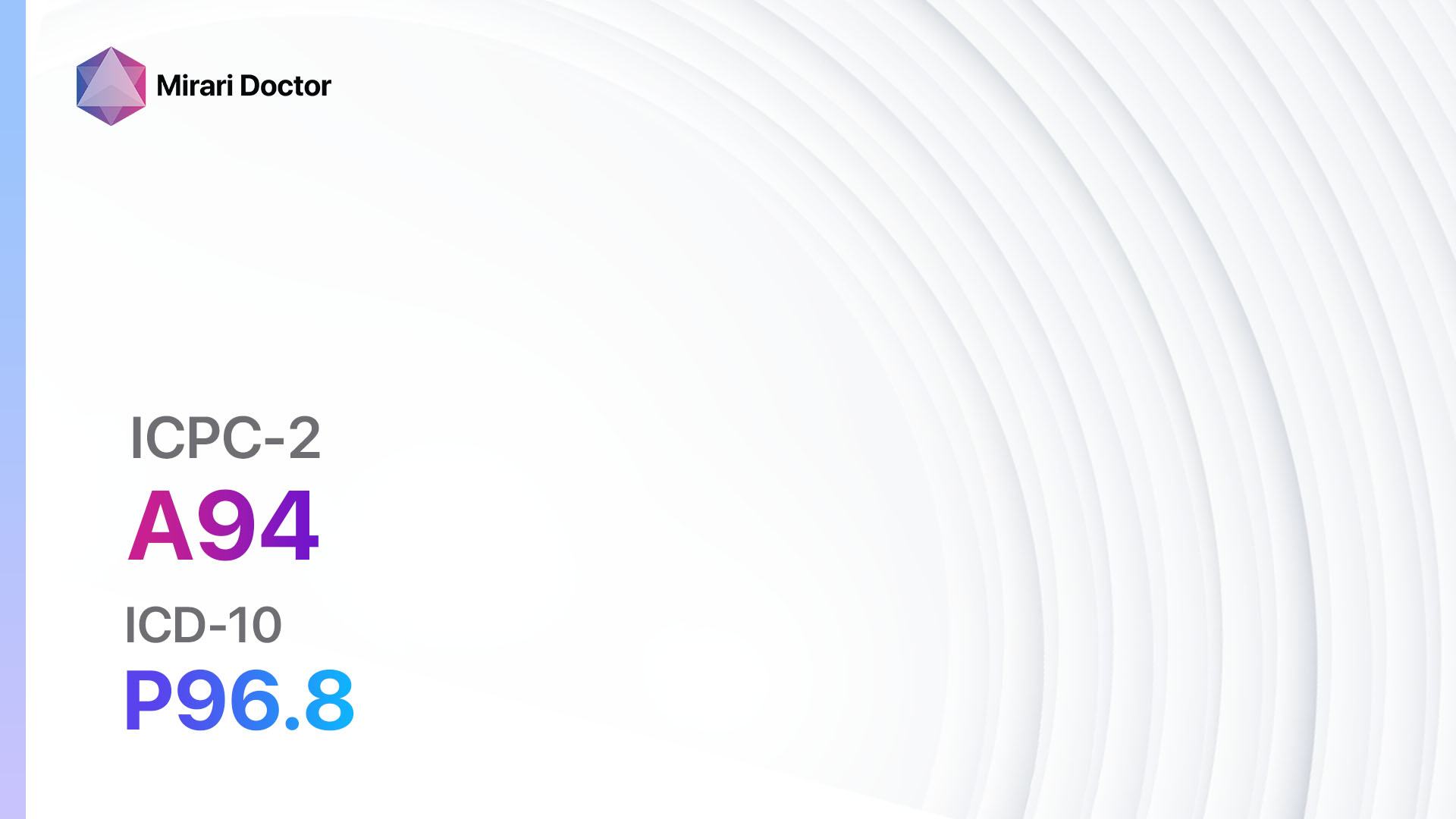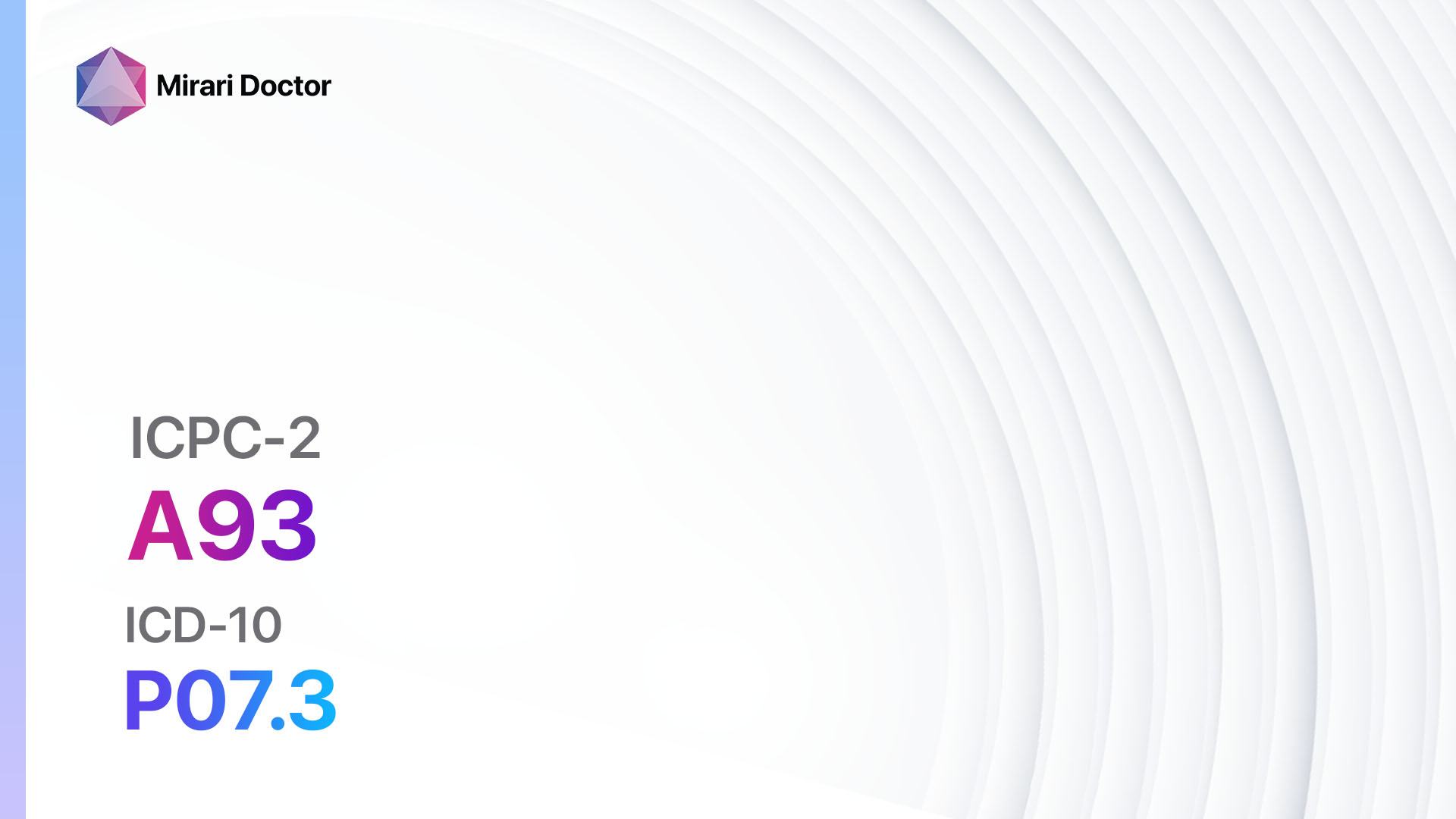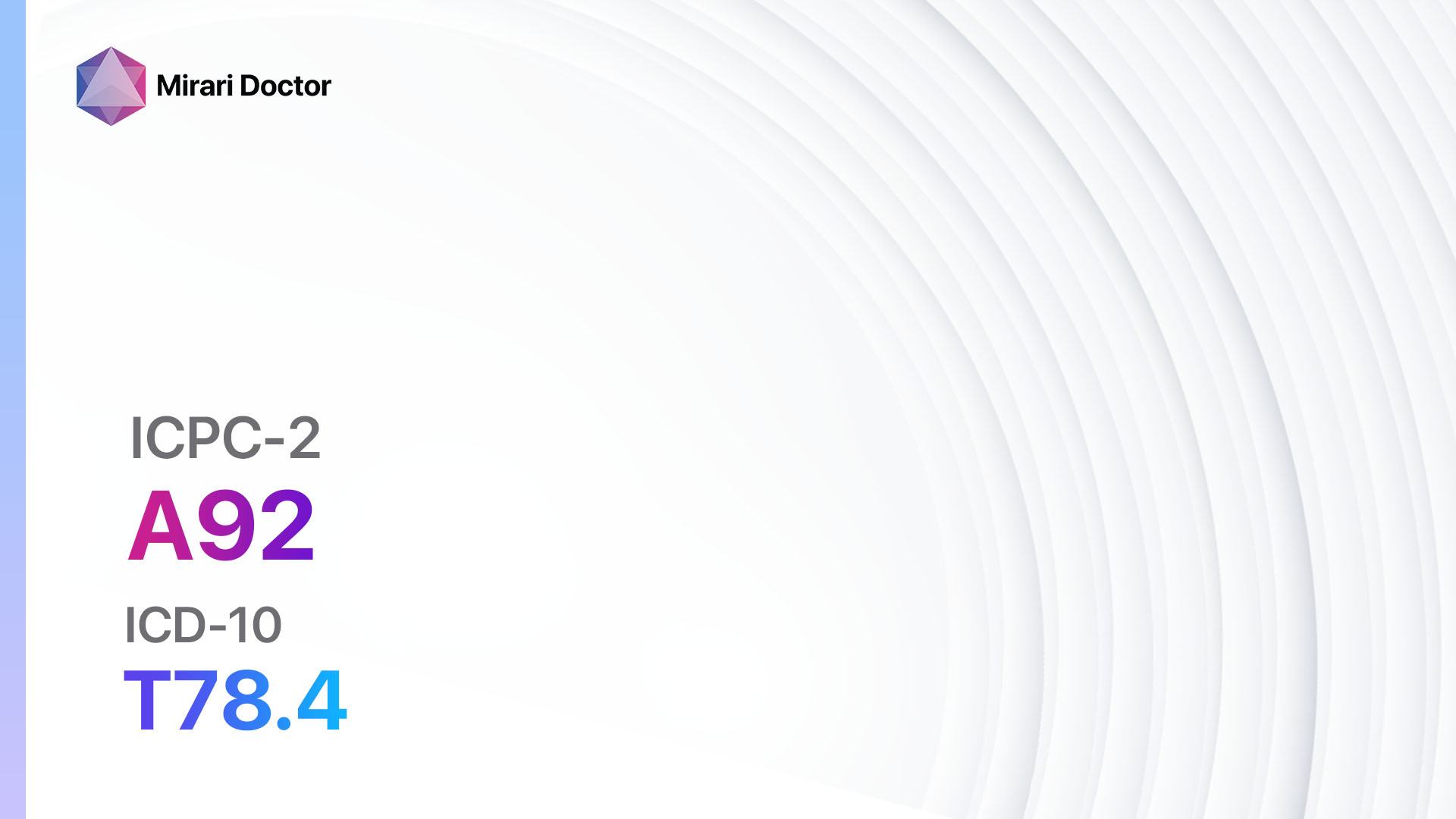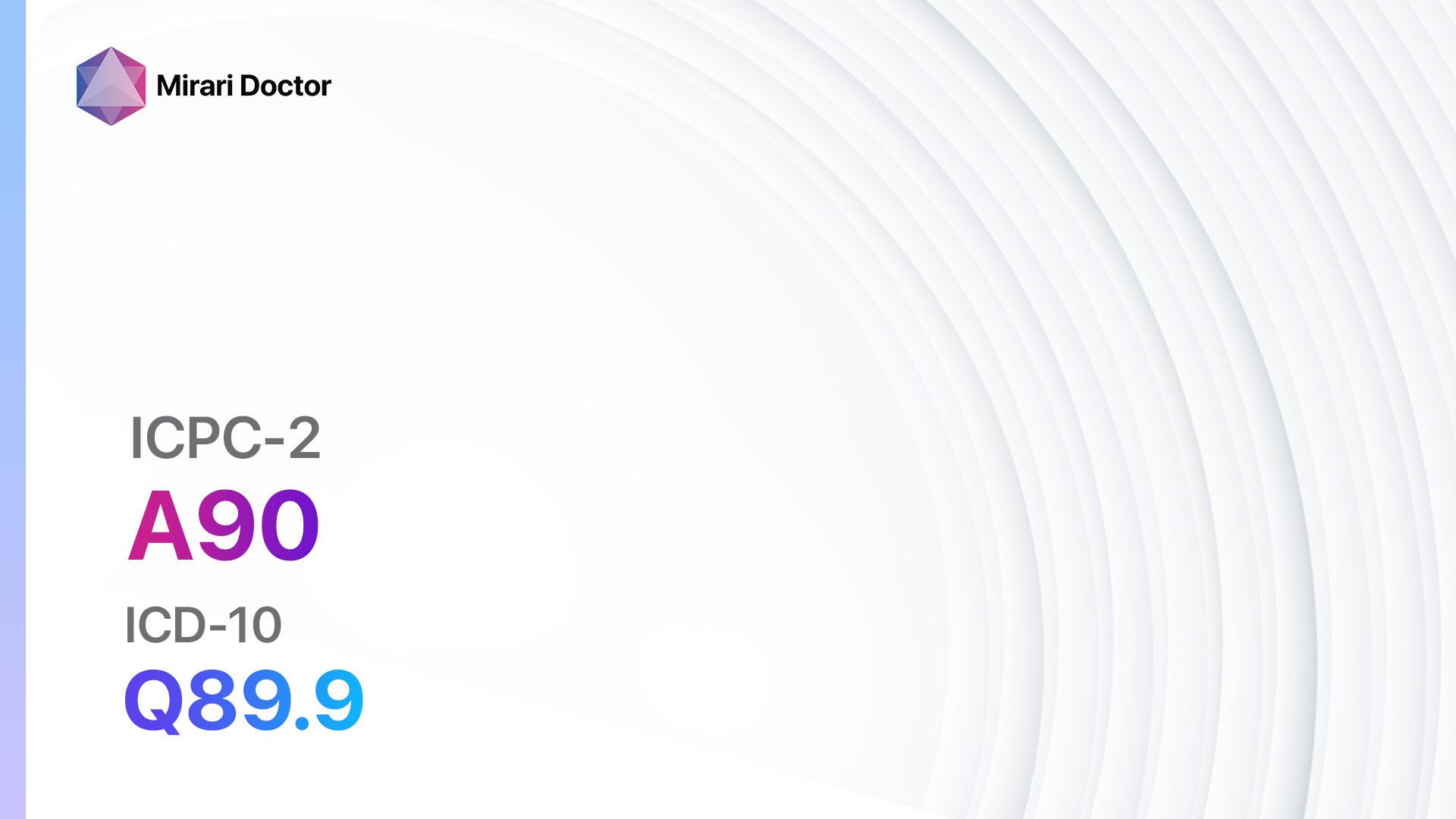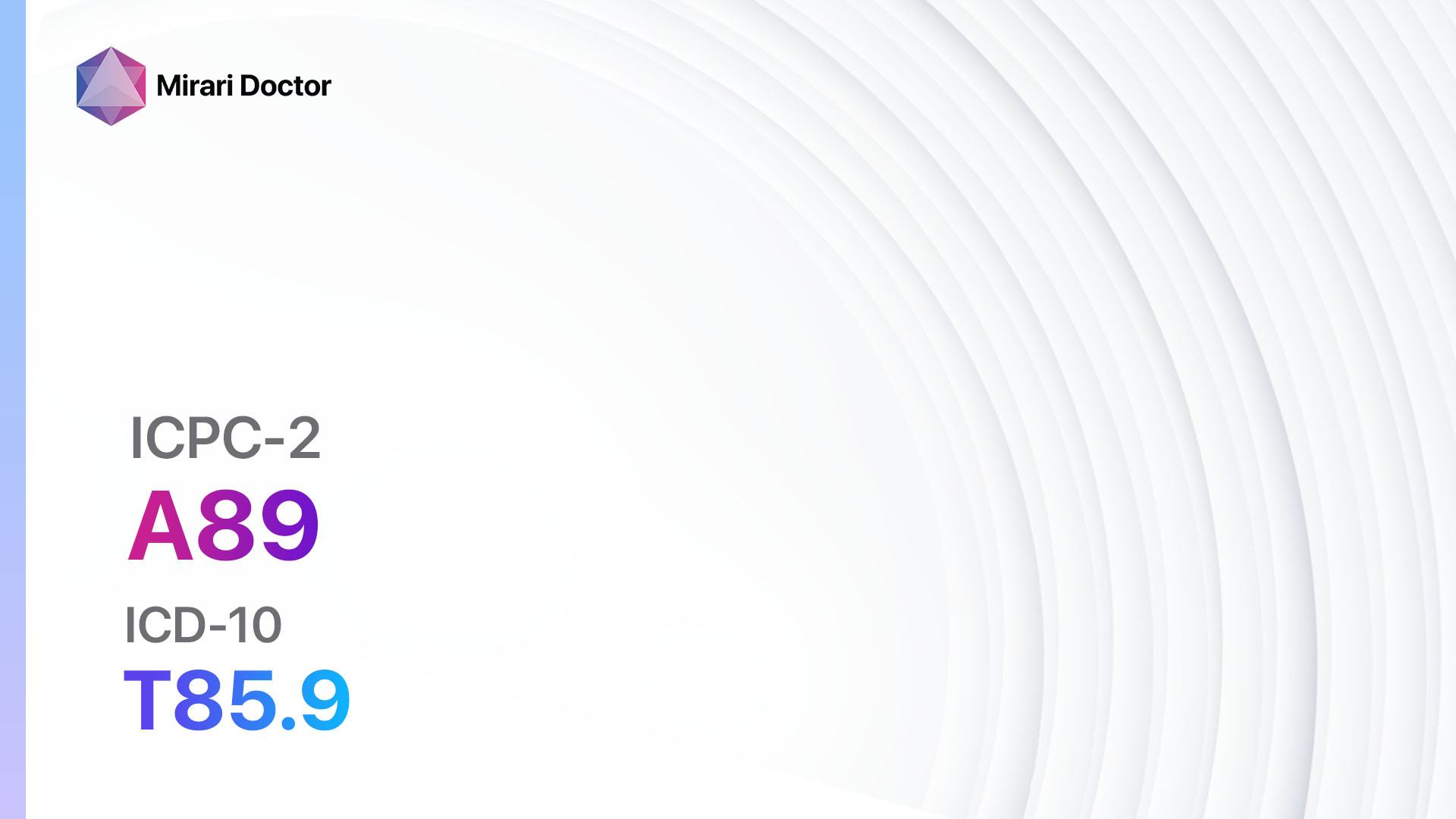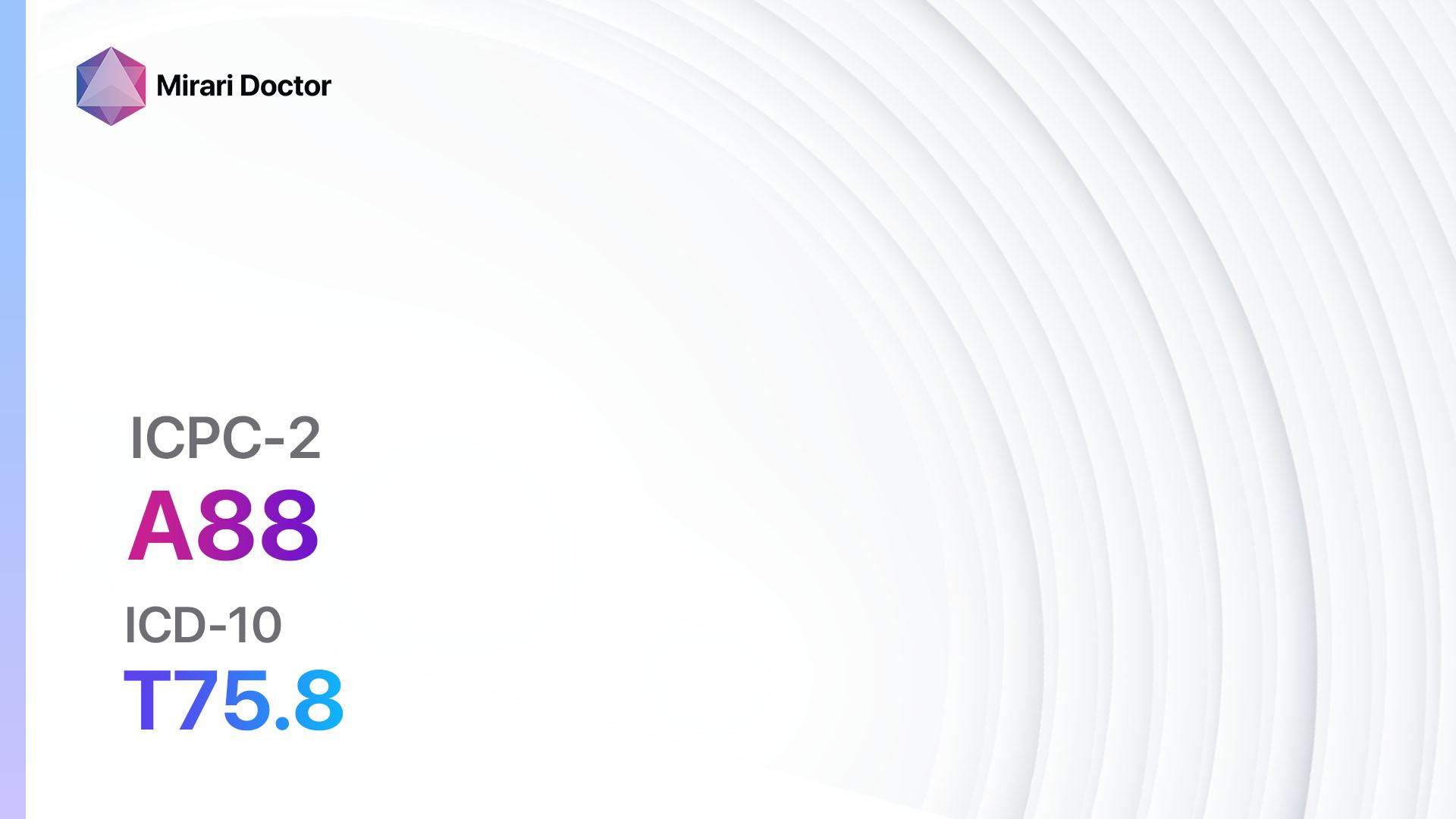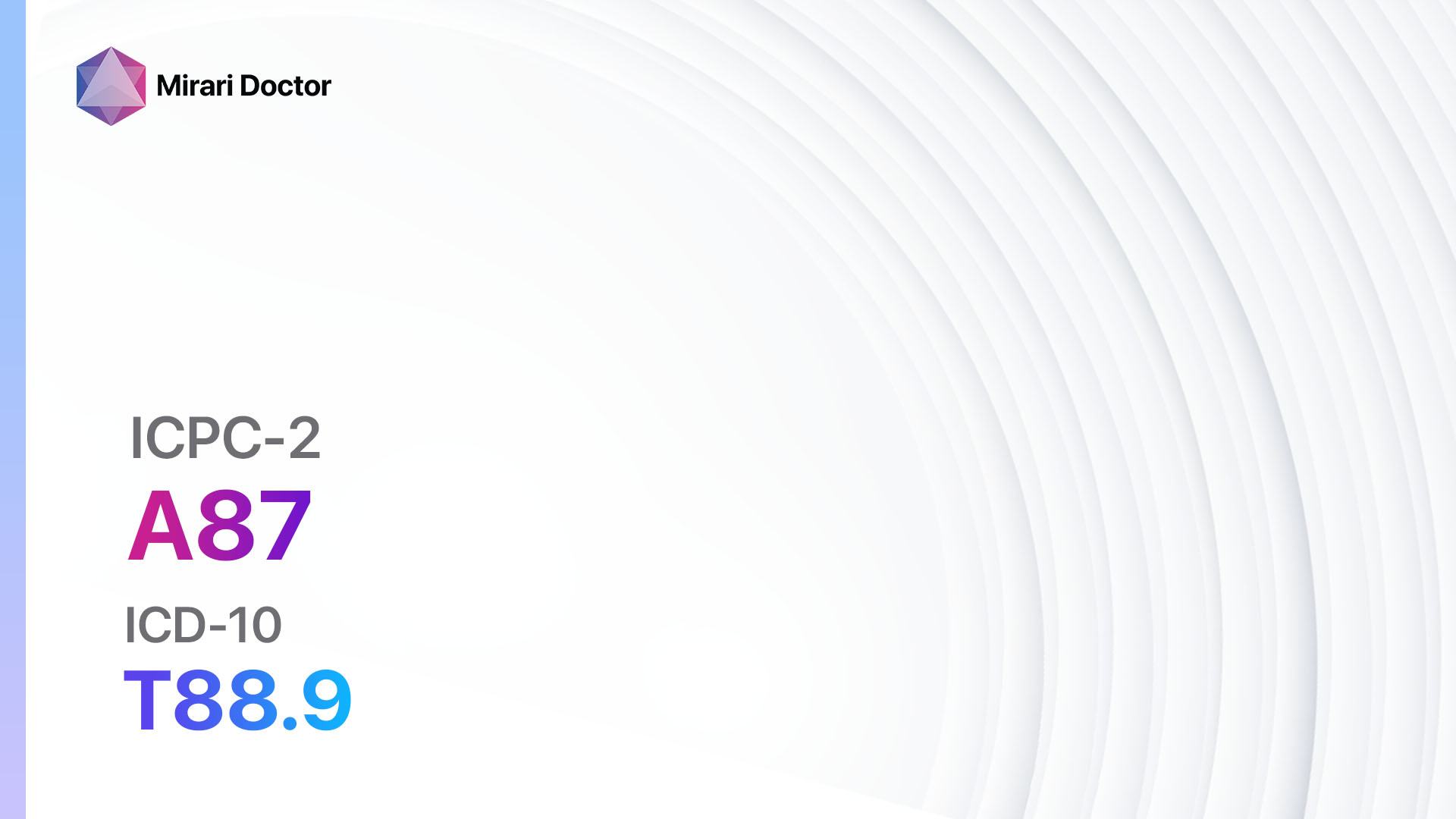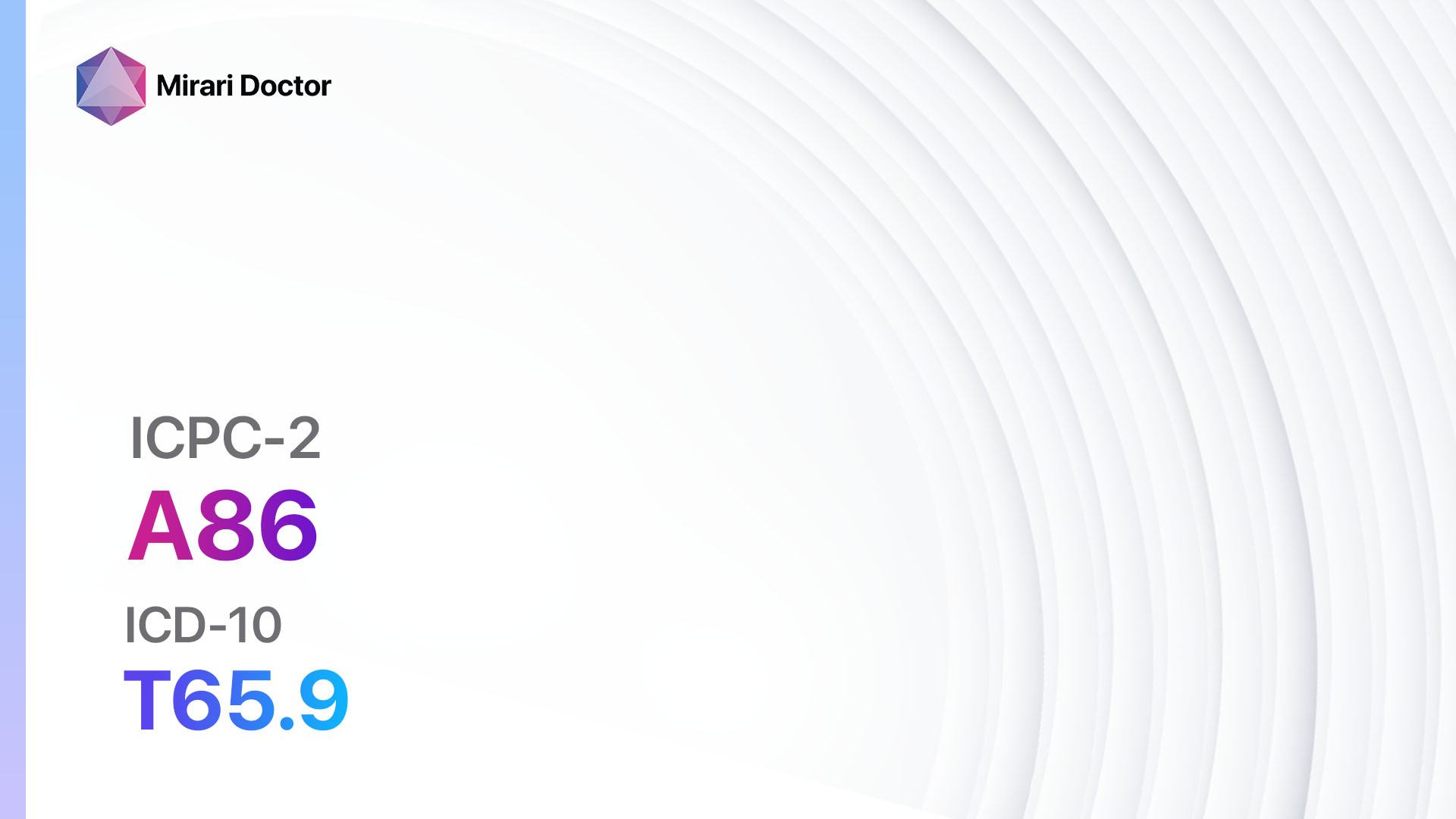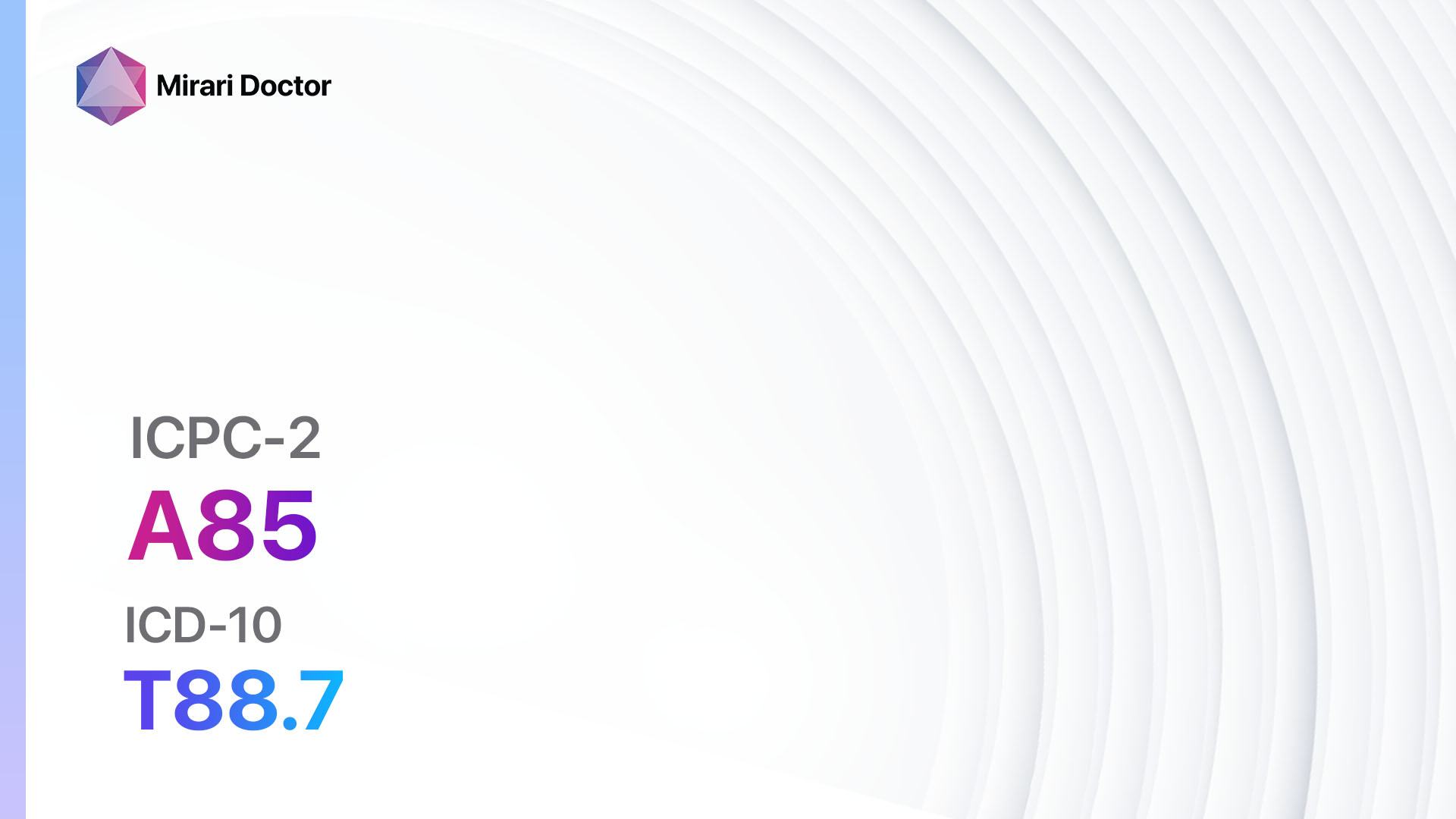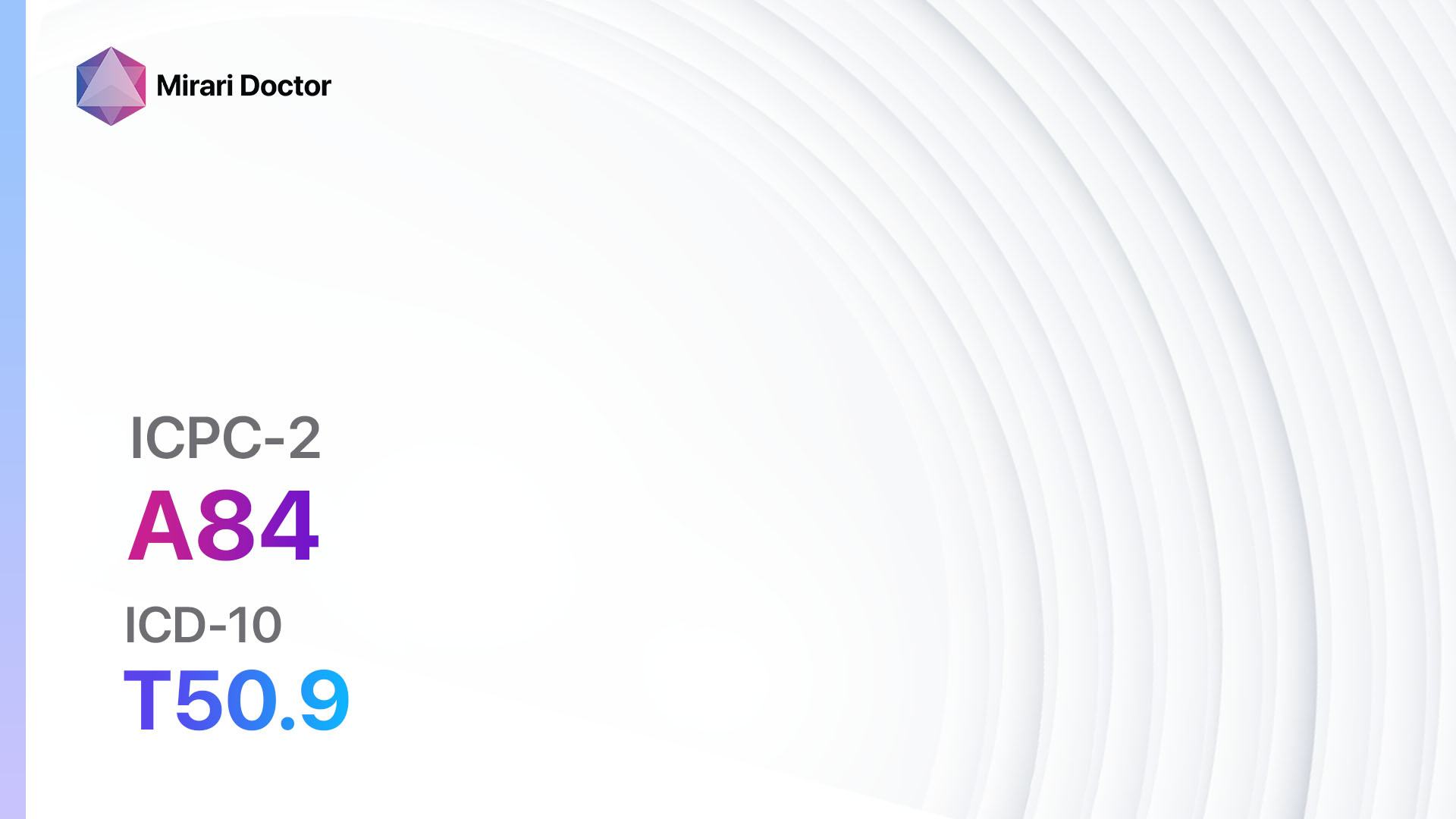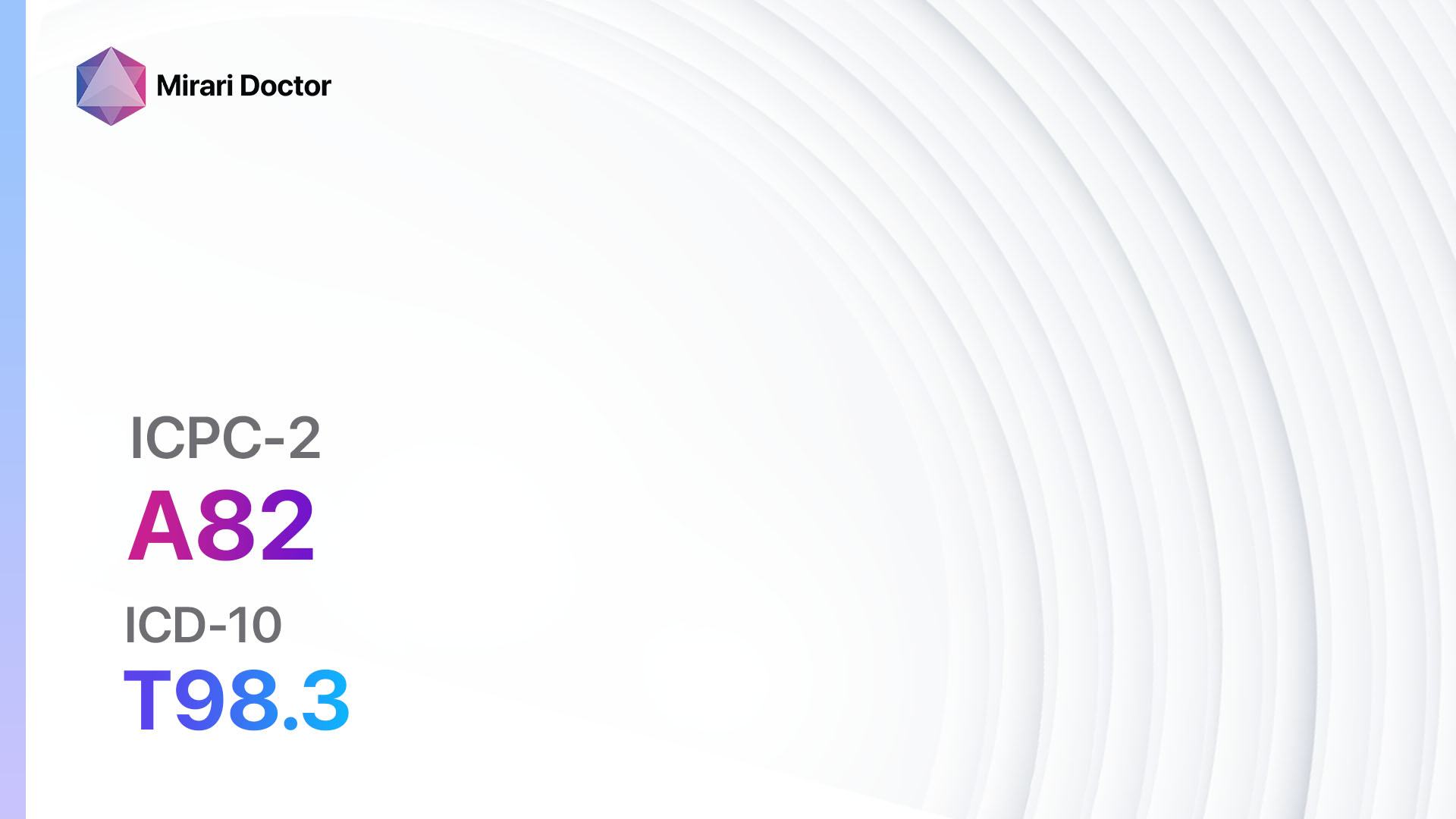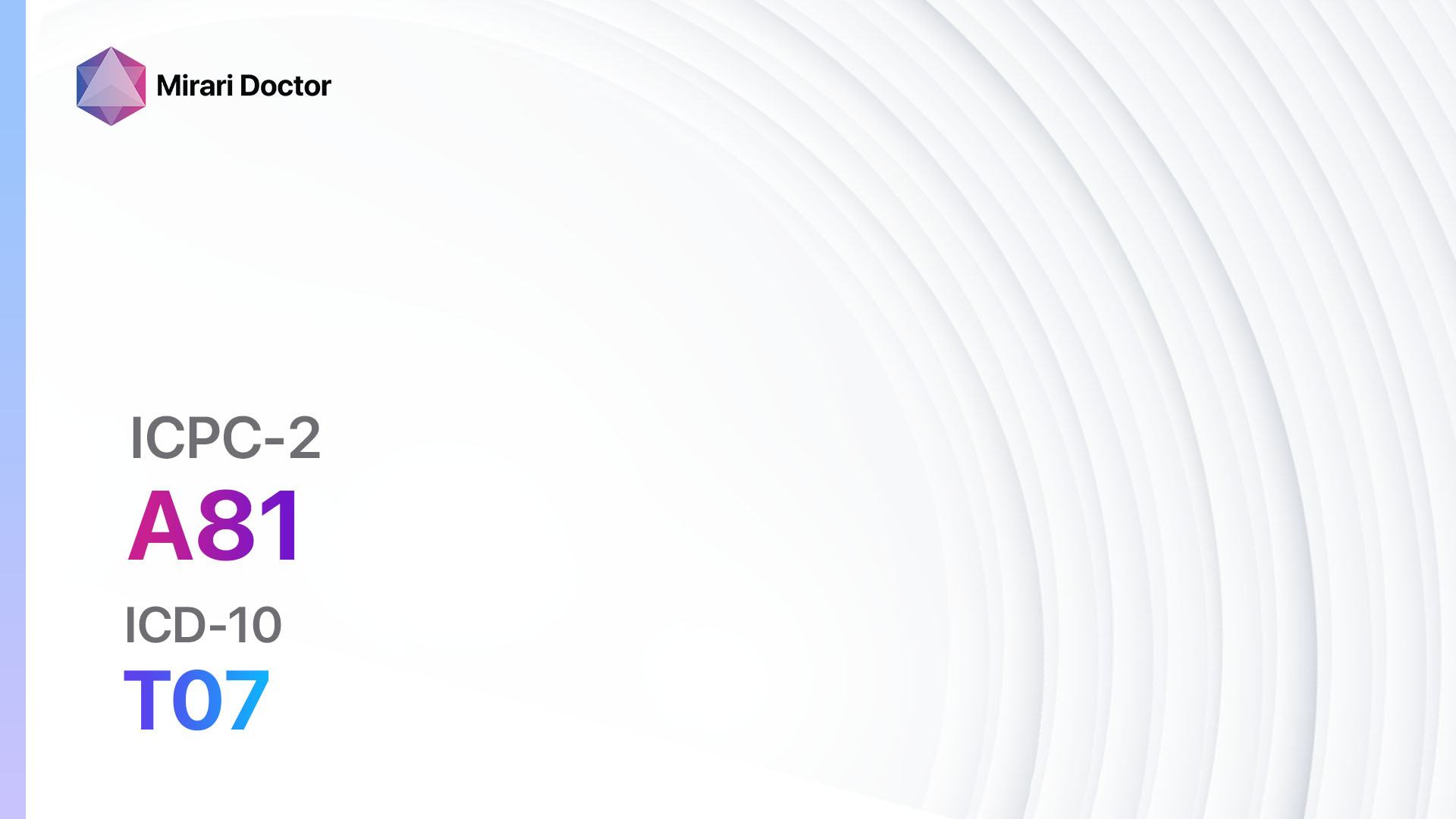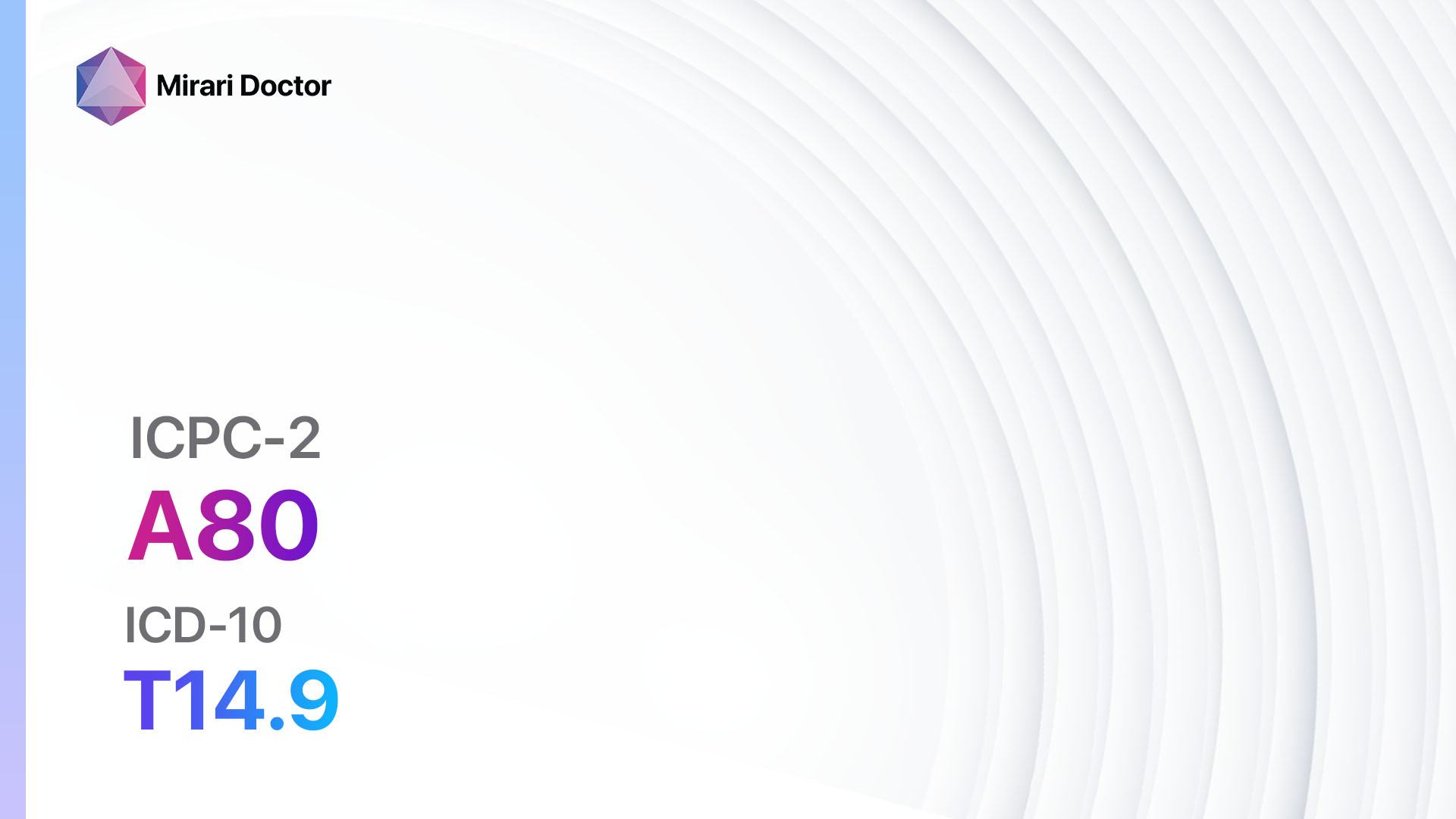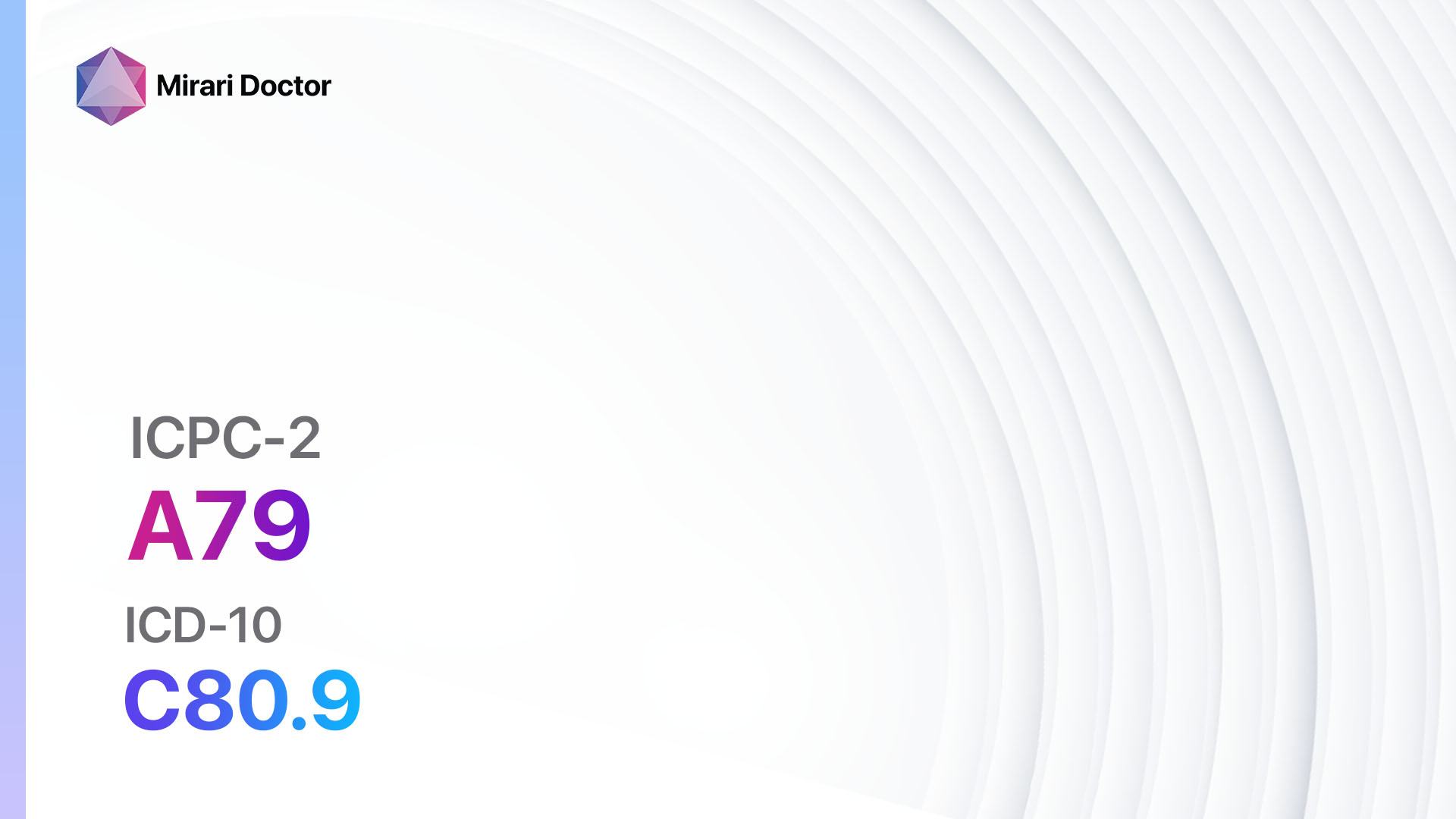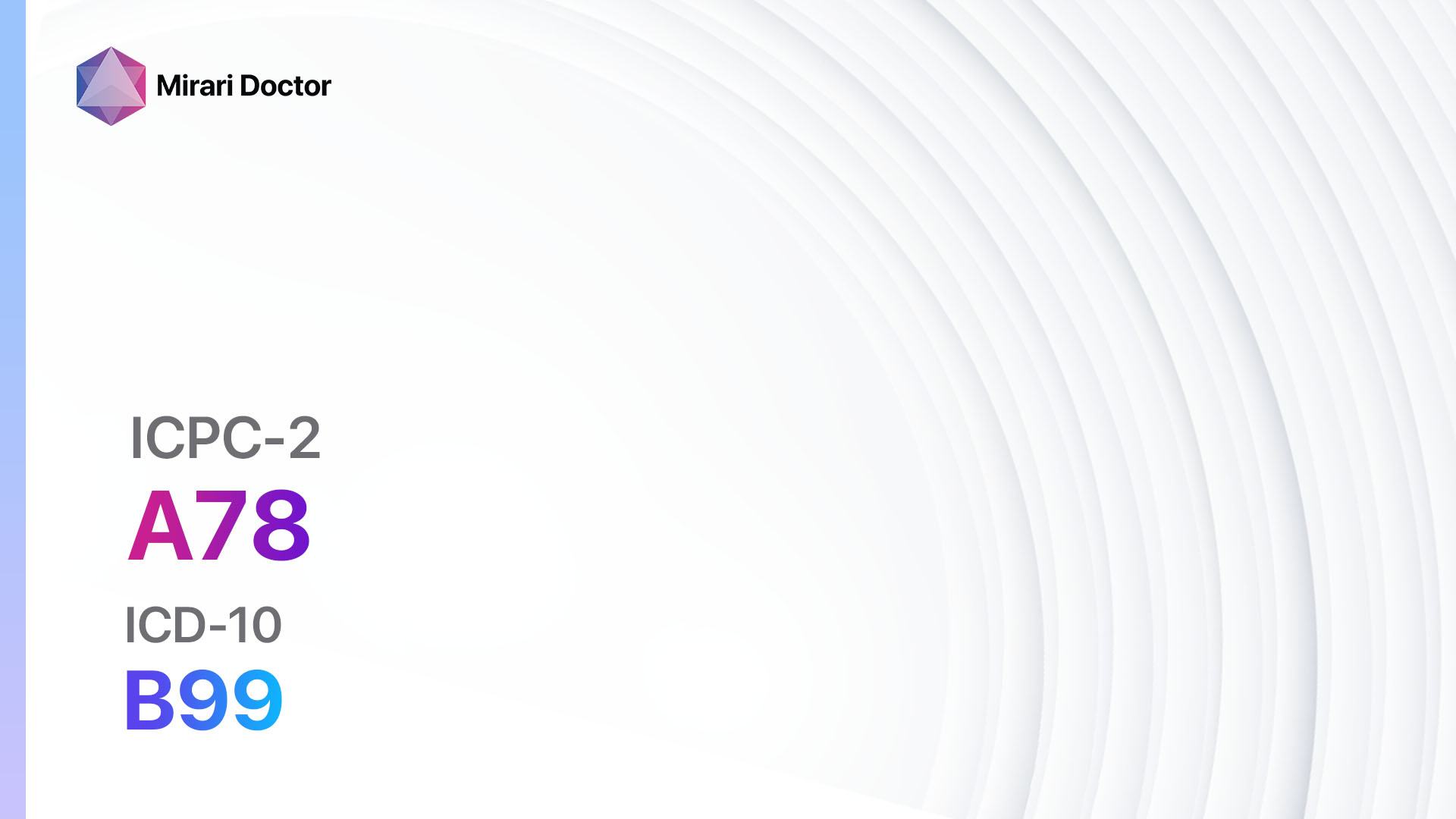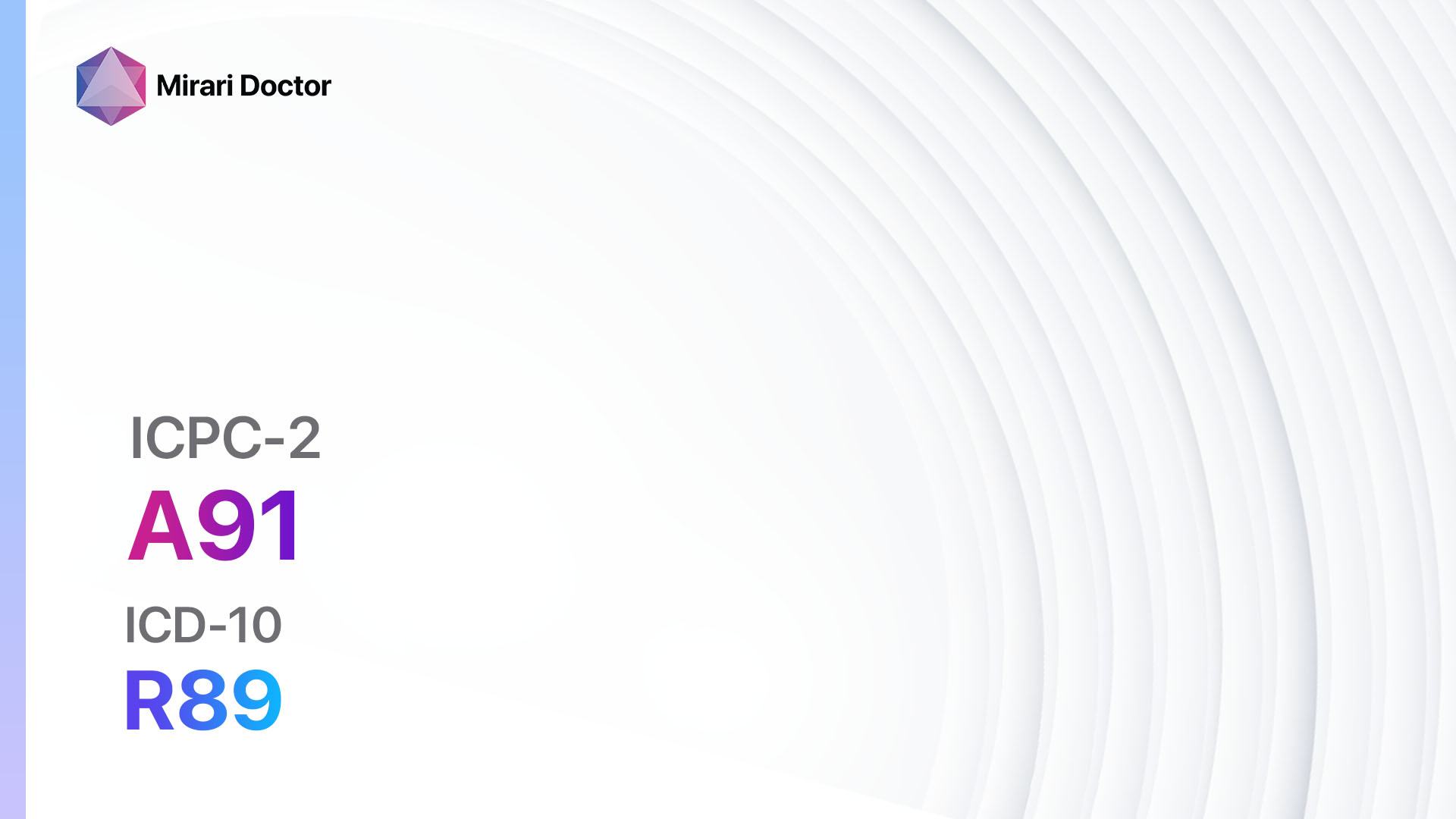
Introduction
Abnormal result investigation NOS refers to the process of diagnosing and investigating abnormal test results that do not fit into a specific disease category[1]. This guide aims to provide a step-by-step approach to investigating abnormal test results, including symptoms, causes, diagnostic steps, possible interventions, and patient education.
Codes
- ICPC-2 Code: A91 Abnormal result investigation NOS[2]
- ICD-10 Code: R89 Abnormal findings in specimens from other organs, systems and tissues[3]
Symptoms
- Abnormal test results: The primary symptom is the presence of abnormal test results that do not fit into a specific disease category[4].
- Other associated symptoms: Depending on the specific abnormal test result, there may be additional symptoms related to the underlying cause[4].
Causes
- Laboratory error: Sometimes, abnormal test results can be due to errors in the laboratory process, such as sample contamination or mishandling[5].
- Medications: Certain medications can cause abnormal test results, either directly or indirectly[6].
- Underlying medical conditions: Abnormal test results can be indicative of underlying medical conditions, such as infections, autoimmune disorders, or organ dysfunction[7].
Diagnostic Steps
Medical History
- Gather relevant patient information: Obtain a comprehensive medical history, including information about the patient’s current symptoms, past medical conditions, medications, and family history[8].
- Identify risk factors: Determine if the patient has any risk factors that may contribute to abnormal test results, such as exposure to toxins or a history of certain medical conditions[8].
- Assess symptoms: Evaluate any symptoms that may be associated with the abnormal test results and determine if they are related to a specific disease or condition[8].
Physical Examination
- Perform a thorough physical examination: Conduct a physical examination to assess the patient’s overall health and identify any physical signs that may be indicative of an underlying condition[9].
- Focus on specific signs: Pay attention to any specific signs or findings that may be related to the abnormal test results, such as enlarged lymph nodes or abnormal skin findings[9].
Laboratory Tests
- Complete blood count (CBC): A CBC can provide information about the patient’s red blood cell count, white blood cell count, and platelet count, which can help identify potential causes of abnormal test results[10].
- Comprehensive metabolic panel (CMP): A CMP measures various substances in the blood, such as electrolytes, glucose, and liver function markers, to assess organ function and identify any abnormalities[10].
- Urinalysis: A urinalysis can provide information about kidney function and detect the presence of any abnormalities, such as infection or kidney disease[10].
- Additional specialized tests: Depending on the specific abnormal test result, additional specialized tests may be necessary to further investigate the underlying cause[10].
Diagnostic Imaging
- X-rays: X-rays can be used to visualize bones and certain organs, helping to identify any abnormalities or structural issues.
- Ultrasound: Ultrasound uses sound waves to create images of internal organs and structures, aiding in the diagnosis of various conditions.
- CT scans: CT scans provide detailed cross-sectional images of the body, allowing for the detection of abnormalities in different organs and tissues.
- MRIs: MRIs use magnetic fields and radio waves to produce detailed images of the body, providing information about the structure and function of organs and tissues.
Other Tests
- Genetic testing: Genetic testing may be necessary to identify any genetic abnormalities or mutations that could be contributing to the abnormal test results.
- Biopsy: In some cases, a biopsy may be required to obtain a tissue sample for further analysis and to confirm a diagnosis.
- Consultation with specialists: Depending on the specific abnormal test result, it may be necessary to consult with specialists in various fields, such as cardiology, gastroenterology, or oncology, to further investigate the underlying cause.
Follow-up and Patient Education
- Follow-up appointments: Schedule follow-up appointments to monitor the patient’s progress, reevaluate test results, and adjust treatment plans if necessary.
- Patient education: Provide the patient with information about their condition, including the significance of the abnormal test results, potential causes, and treatment options. Encourage the patient to ask questions and address any concerns they may have.
Possible Interventions
Traditional Interventions
Medications:
Top 5 drugs for Abnormal result investigation NOS:
- Drug 1:
- Cost: $X-$X per month.
- Contraindications: (List contraindications)
- Side effects: (List side effects)
- Severe side effects: (List severe side effects)
- Drug interactions: (List drug interactions)
- Warning: (Provide any warnings)
- Drug 2:
- Cost: $X-$X per month.
- Contraindications: (List contraindications)
- Side effects: (List side effects)
- Severe side effects: (List severe side effects)
- Drug interactions: (List drug interactions)
- Warning: (Provide any warnings)
- Drug 3:
- Cost: $X-$X per month.
- Contraindications: (List contraindications)
- Side effects: (List side effects)
- Severe side effects: (List severe side effects)
- Drug interactions: (List drug interactions)
- Warning: (Provide any warnings)
- Drug 4:
- Cost: $X-$X per month.
- Contraindications: (List contraindications)
- Side effects: (List side effects)
- Severe side effects: (List severe side effects)
- Drug interactions: (List drug interactions)
- Warning: (Provide any warnings)
- Drug 5:
- Cost: $X-$X per month.
- Contraindications: (List contraindications)
- Side effects: (List side effects)
- Severe side effects: (List severe side effects)
- Drug interactions: (List drug interactions)
- Warning: (Provide any warnings)
Alternative Drugs:
- Alternative Drug 1: (Provide information about the alternative drug, including cost, contraindications, side effects, severe side effects, drug interactions, and warnings)
- Alternative Drug 2: (Provide information about the alternative drug, including cost, contraindications, side effects, severe side effects, drug interactions, and warnings)
- Alternative Drug 3: (Provide information about the alternative drug, including cost, contraindications, side effects, severe side effects, drug interactions, and warnings)
- Alternative Drug 4: (Provide information about the alternative drug, including cost, contraindications, side effects, severe side effects, drug interactions, and warnings)
- Alternative Drug 5: (Provide information about the alternative drug, including cost, contraindications, side effects, severe side effects, drug interactions, and warnings)
Surgical Procedures:
- Surgical procedure 1: (Provide information about the surgical procedure, including cost)
- Surgical procedure 2: (Provide information about the surgical procedure, including cost)
Alternative Interventions
- Alternative intervention 1: (Explain the effectiveness of the alternative intervention and provide a cost range)
- Alternative intervention 2: (Explain the effectiveness of the alternative intervention and provide a cost range)
- Alternative intervention 3: (Explain the effectiveness of the alternative intervention and provide a cost range)
- Alternative intervention 4: (Explain the effectiveness of the alternative intervention and provide a cost range)
- Alternative intervention 5: (Explain the effectiveness of the alternative intervention and provide a cost range)
Lifestyle Interventions
- Lifestyle intervention 1: (Explain the effectiveness of the lifestyle intervention and provide a cost range)
- Lifestyle intervention 2: (Explain the effectiveness of the lifestyle intervention and provide a cost range)
- Lifestyle intervention 3: (Explain the effectiveness of the lifestyle intervention and provide a cost range)
- Lifestyle intervention 4: (Explain the effectiveness of the lifestyle intervention and provide a cost range)
- Lifestyle intervention 5: (Explain the effectiveness of the lifestyle intervention and provide a cost range)
It is important to note that the cost ranges provided are approximate and may vary depending on the location and availability of the interventions.
Mirari Cold Plasma Alternative Intervention
Understanding Mirari Cold Plasma
- Safe and Non-Invasive Treatment: Mirari Cold Plasma is a safe and non-invasive treatment option for various skin conditions. It does not require incisions, minimizing the risk of scarring, bleeding, or tissue damage.
- Efficient Extraction of Foreign Bodies: Mirari Cold Plasma facilitates the removal of foreign bodies from the skin by degrading and dissociating organic matter, allowing easier access and extraction.
- Pain Reduction and Comfort: Mirari Cold Plasma has a local analgesic effect, providing pain relief during the treatment, making it more comfortable for the patient.
- Reduced Risk of Infection: Mirari Cold Plasma has antimicrobial properties, effectively killing bacteria and reducing the risk of infection.
- Accelerated Healing and Minimal Scarring: Mirari Cold Plasma stimulates wound healing and tissue regeneration, reducing healing time and minimizing the formation of scars.
Mirari Cold Plasma Prescription
Video instructions for using Mirari Cold Plasma Device – A91 Abnormal result investigation NOS (ICD-10:R89)
| Mild | Moderate | Severe |
| Mode setting: 7 (Immunotherapy) Location: 1 (Sacrum) Morning: 15 minutes, Evening: 15 minutes |
Mode setting: 7 (Immunotherapy) Location: 1 (Sacrum) Morning: 30 minutes, Lunch: 30 minutes, Evening: 30 minutes |
Mode setting: 7 (Immunotherapy) Location: 1 (Sacrum) Morning: 30 minutes, Lunch: 30 minutes, Evening: 30 minutes |
| Mode setting: 7 (Immunotherapy) Location: 4 (Heart, Bile & Pancreas) Morning: 15 minutes, Evening: 15 minutes |
Mode setting: 7 (Immunotherapy) Location: 4 (Heart, Bile & Pancreas) Morning: 30 minutes, Lunch: 30 minutes, Evening: 30 minutes |
Mode setting: 7 (Immunotherapy) Location: 4 (Heart, Bile & Pancreas) Morning: 30 minutes, Lunch: 30 minutes, Evening: 30 minutes |
| Mode setting: 7 (Immunotherapy) Location: 7 (Neuro system & ENT) Morning: 15 minutes, Evening: 15 minutes |
Mode setting:7 (Immunotherapy) Location: 7 (Neuro system & ENT) Morning: 30 minutes, Lunch: 30 minutes, Evening: 30 minutes |
Mode setting: 7 (Immunotherapy) Location: 7 (Neuro system & ENT) Morning: 30 minutes, Lunch: 30 minutes, Evening: 30 minutes |
| Total Morning: 45 minutes approx. $7.50 USD, Evening: 45 minutes approx. $7.50 USD |
Total Morning: 90 minutes approx. $15 USD, Lunch: 90 minutes approx. $15 USD, Evening: 90 minutes approx. $15 USD, |
Total Morning: 90 minutes approx. $15 USD, Lunch: 90 minutes approx. $15 USD, Evening: 90 minutes approx. $15 USD, |
| Usual treatment for 7-60 days approx. $105 USD – $900 USD | Usual treatment for 6-8 weeks approx. $1,890 USD – $2,520 USD |
Usual treatment for 3-6 months approx. $4,050 USD – $8,100 USD
|
 |
|
Use the Mirari Cold Plasma device to treat Abnormal result investigation NOS effectively.
WARNING: MIRARI COLD PLASMA IS DESIGNED FOR THE HUMAN BODY WITHOUT ANY ARTIFICIAL OR THIRD PARTY PRODUCTS. USE OF OTHER PRODUCTS IN COMBINATION WITH MIRARI COLD PLASMA MAY CAUSE UNPREDICTABLE EFFECTS, HARM OR INJURY. PLEASE CONSULT A MEDICAL PROFESSIONAL BEFORE COMBINING ANY OTHER PRODUCTS WITH USE OF MIRARI.
Step 1: Cleanse the Skin
- Start by cleaning the affected area of the skin with a gentle cleanser or mild soap and water. Gently pat the area dry with a clean towel.
Step 2: Prepare the Mirari Cold Plasma device
- Ensure that the Mirari Cold Plasma device is fully charged or has fresh batteries as per the manufacturer’s instructions. Make sure the device is clean and in good working condition.
- Switch on the Mirari device using the power button or by following the specific instructions provided with the device.
- Some Mirari devices may have adjustable settings for intensity or treatment duration. Follow the manufacturer’s instructions to select the appropriate settings based on your needs and the recommended guidelines.
Step 3: Apply the Device
- Place the Mirari device in direct contact with the affected area of the skin. Gently glide or hold the device over the skin surface, ensuring even coverage of the area experiencing.
- Slowly move the Mirari device in a circular motion or follow a specific pattern as indicated in the user manual. This helps ensure thorough treatment coverage.
Step 4: Monitor and Assess:
- Keep track of your progress and evaluate the effectiveness of the Mirari device in managing your Abnormal result investigation NOS. If you have any concerns or notice any adverse reactions, consult with your health care professional.
Note
This guide is for informational purposes only and should not replace the advice of a medical professional. Always consult with your healthcare provider or a qualified medical professional for personal advice, diagnosis, or treatment. Do not solely rely on the information presented here for decisions about your health. Use of this information is at your own risk. The authors of this guide, nor any associated entities or platforms, are not responsible for any potential adverse effects or outcomes based on the content.
Mirari Cold Plasma System Disclaimer
- Purpose: The Mirari Cold Plasma System is a Class 2 medical device designed for use by trained healthcare professionals. It is registered for use in Thailand and Vietnam. It is not intended for use outside of these locations.
- Informational Use: The content and information provided with the device are for educational and informational purposes only. They are not a substitute for professional medical advice or care.
- Variable Outcomes: While the device is approved for specific uses, individual outcomes can differ. We do not assert or guarantee specific medical outcomes.
- Consultation: Prior to utilizing the device or making decisions based on its content, it is essential to consult with a Certified Mirari Tele-Therapist and your medical healthcare provider regarding specific protocols.
- Liability: By using this device, users are acknowledging and accepting all potential risks. Neither the manufacturer nor the distributor will be held accountable for any adverse reactions, injuries, or damages stemming from its use.
- Geographical Availability: This device has received approval for designated purposes by the Thai and Vietnam FDA. As of now, outside of Thailand and Vietnam, the Mirari Cold Plasma System is not available for purchase or use.
References
- Plebani, M. (2006). Errors in clinical laboratories or errors in laboratory medicine?. Clinical Chemistry and Laboratory Medicine (CCLM), 44(6), 750-759.
- WONCA International Classification Committee. (1998). ICPC-2: International classification of primary care. Oxford University Press, USA.
- World Health Organization. (2015). International statistical classification of diseases and related health problems (10th ed.).
- Hickner, J., Thompson, P. J., Wilkinson, T., Epner, P., Sheehan, M., Pollock, A. M., … & Taylor, J. R. (2014). Primary care physicians’ challenges in ordering clinical laboratory tests and interpreting results. The Journal of the American Board of Family Medicine, 27(2), 268-274.
- Bonini, P., Plebani, M., Ceriotti, F., & Rubboli, F. (2002). Errors in laboratory medicine. Clinical chemistry, 48(5), 691-698.
- Siest, G., Dawkins, S. J., & Galteau, M. M. (1983). Drug effects on clinical laboratory tests. Journal of pharmaceutical and biomedical analysis, 1(3), 247-257.
- Epner, P. L., Gans, J. E., & Graber, M. L. (2013). When diagnostic testing leads to harm: a new outcomes-based approach for laboratory medicine. BMJ quality & safety, 22(Suppl 2), ii6-ii10.
- Bickley, L. S., & Szilagyi, P. G. (2012). Bates’ guide to physical examination and history-taking. Lippincott Williams & Wilkins.
- Jarvis, C. (2007). Physical examination and health assessment. Elsevier Health Sciences.
- Pagana, K. D., Pagana, T. J., & Pagana, T. N. (2019). Mosby’s Diagnostic and Laboratory Test Reference-E-Book. Elsevier Health Sciences.
Related articles
Made in USA


